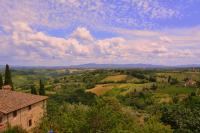
Organic areas in Tuscany are growing (+1.7%) as well as the number of operators (+1.6%), so that the Region confirms itself as the queen of organic farming in Italy, with the highest incidence of certified areas (35.8%), which already allows to reach the European “Farm to Fork” objective set at 25%, and the highest percentage of farms that have converted (12.2%). According to ‘Coldiretti Toscana’(the national farmers’ union) on the basis of Sinab and MASAF data, consumption is also growing.
In the Region, the areas cultivated with organic methods, according to the latest Sinab report, have exceeded 229,000 hectares with a leap forward of 3,775 hectares between 2021 and 2022, and the explosion of organic land goes hand in hand with the growth in the number of players that cohabit the supply chain. A key role in the rooting of organic culture in Tuscany has been played, and is being played, by women, with 34.9% of female-run businesses using organic methods, a higher percentage than the national 30.1%. A result that drives consumption, where the value of the domestic market for organic products rises to 3.7 billion.
And while the data of the Sinab report consecrated Tuscan agriculture as one of the leading and greenest in Europe, the regional technical round table of the five Tuscan organic districts met in Fiesole a few days ago, taking stock of the situation of the organic districts and their evolution both in terms of numbers and of the agricultural surface area used. The idea was put forward of creating a single brand for organic districts with the relative logo so as to identify these territories as a 'single body' and give them more strength, also in view of the new European regulations, in order to achieve a recognition that could open the way to new funding.
"For the Region, the organic districts are a virtuous model to strive for in order to make farmers and the territory a flywheel of development and tourist attraction”, indicates a note from the Region. “To date, there are five districts, but there is a strong interest on the part of many municipalities to undertake this path for economic development and to safeguard the landscape, environment and biodiversity of the territories”.
Source: Green Planet



